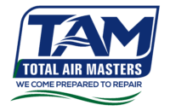
When the cold months arrive, a well-functioning furnace is essential to keep your home warm and cozy. But what happens if your furnace starts acting up? Before calling in the pros, you can take a few steps to diagnose and fix minor issues yourself.
In this article, we will guide you through some basic checks you can perform to ensure your furnace is working correctly. These tips will help you troubleshoot common furnace issues, from checking thermostat settings to inspecting air filters. Maintaining your furnace not only ensures a comfortable home but also extends the life of your HVAC system.
Check Your Thermostat Settings
One of the most straightforward troubleshooting steps for a malfunctioning furnace is to check the thermostat settings. Sometimes, the problem can be as simple as incorrect settings or a thermostat that needs a fresh set of batteries.
First, ensure that the thermostat is set to “heat” mode. This may sound obvious, but it’s an easy mistake, especially if the thermostat was previously set to cooling mode during the warmer months. Once it’s set to “heat,” adjust the temperature to 5 degrees higher than the current room temperature to see if the furnace kicks in.
Next, check if the thermostat shows errors or if the display is blank. If it’s battery-operated and the display is off, replace the batteries. This could fix issues like the furnace not turning on at all. Also, ensure the thermostat is level on the wall, as a tilted thermostat can give incorrect readings, affecting your furnace’s performance.
If the settings and batteries are correct and the furnace still doesn’t respond, look at the wiring inside the thermostat (only if you feel comfortable doing so). Loose or disconnected wires can also prevent the thermostat from communicating with the furnace properly.
Inspect Air Filters
Air filters are critical to the efficient operation of your furnace. They trap dust, dirt, and other particles, ensuring clean air circulates in your home. However, when these filters get clogged, they can restrict airflow, making your furnace work harder and less efficiently.
Start by locating the air filter, usually found in the blower compartment, the return air duct, or sometimes inside the furnace itself. Once you’ve found it, remove the filter and hold it to the light. If you can’t see much light coming through, it’s time to clean or replace it.
For reusable filters, follow the manufacturer’s guidelines on how to clean them properly. You can rinse them with water and let them dry completely before reinstalling. For disposable filters, replace them with a new one that matches your furnace’s specifications.
Checking and changing air filters regularly, about once every 1-3 months, ensures your furnace operates efficiently and keeps the air in your home clean. This simple step can prevent more significant issues and extend the life of your HVAC system.
Examine Furnace Components
Inspecting the critical components of your furnace is essential for identifying potential problems. These include the blower motor, pilot light, and burners. Regular maintenance of these components helps ensure your furnace runs efficiently and safely.
First, check the blower motor. The blower motor is responsible for circulating air through the ductwork. Listen for any unusual noises, like squeaking or grinding. These sounds could indicate that the motor needs lubrication or has a mechanical issue that needs professional attention.
Next, examine the pilot light or ignition system, depending on your furnace type. For older furnaces with a pilot light, ensure it is lit and burning with a solid blue flame. A yellow or flickering flame may indicate a problem with the gas supply or a need for cleaning. For newer furnaces with electronic ignition, ensure the system functions correctly, and no error codes are displayed.
Lastly, inspect the burners. Dirty or clogged burners can cause inefficient combustion and affect your furnace’s performance. If you see any dust or debris buildup on the burners, cleaning them carefully is a good idea. Ensure the stove is turned off and thoroughly cooled before cleaning to avoid accidents.
Consider Professional Maintenance and Repairs
While many furnace maintenance tasks can be done yourself, some issues require the expertise of a professional. Regular professional maintenance can catch problems early before they become major repairs and ensure your furnace runs efficiently.
Professional maintenance typically includes a thorough inspection of your entire system. A technician will check all the components, including the heat exchanger, flue, and ductwork. They will also test for carbon monoxide leaks, which can be dangerous if undetected. Regular inspections help ensure your furnace is operating safely and efficiently.
In addition to inspections, a professional can perform necessary repairs beyond basic troubleshooting. An expert should handle issues like faulty wiring, gas leaks, or significant mechanical problems to avoid safety risks and ensure proper repair. Investing in professional maintenance can extend the life of your furnace and improve your home’s overall comfort.
Conclusion
Maintaining your furnace ensures warmth and comfort during the colder months. Taking these steps will improve your furnace’s performance and extend its lifespan. Regular maintenance is an investment in your home’s comfort and safety. If you need expert help with your HVAC system, don’t wait for issues to escalate.
For reliable and professional heating repair in Katy, contact Total Air Masters. Our team is dedicated to keeping your home comfortable and ensuring your furnace works efficiently year-round. Call us today for all your HVAC needs.
